- What is convection?
Convection is a circulating current in a fluid (liquid or gas).
- Describe convection in air.
In air, warm air rises and cool air moves in to take its place
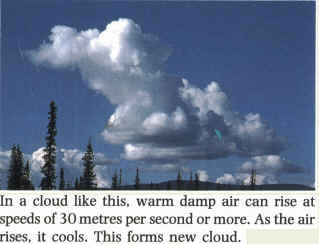
- Explain an experiment to show convection in air.
Hot air rises above the candle. Cooler air flows in to replace hot air. The smoke from the burning straw shows the current of air.
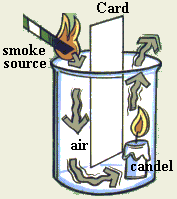
- Explain an experiment to show convection in water.
Hot water rises above the Bunsen flame. Cooler water flows in to replace it. Potassium permanganate crystals color the water so that one can see the current.
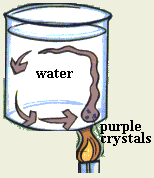
- Why warm fluid rises?
When the fluid is heated it expands. This makes it less dense because the mass takes up a larger volume. So being less dense, the warm air floats upwards through the denser, cooler air a round it.
- Explain convection of air by heat radiators.
Most of the heat from a radiator is circulated by convection. Warm air around the radiator rises above the radiator and cooler air replaces it. The cooler air gets heated by the radiator and it rises and cooler air moves in to replace it. This process continues until all the air in the room has the same temperature.
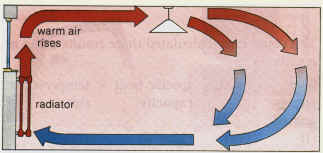
- Explain convection of air in refrigerators.
In a refrigerator, the freezer cools the air around it. As a result, the cooled air moves down and hot air at the bottom of the refrigerator moves up. This process continues until all the air in the refrigerator has the same temperature.
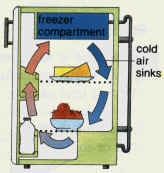
- Explain convection of water in hot-water supply system.
From the figure shown, water is heated in the boiler. It rises to the storage tank. Cooler water flows in to replace it. It too is heated. In time, a supply of hot water collects in the tank from the top down. The header tank provides the pressure to push hot water out of the raps.
|
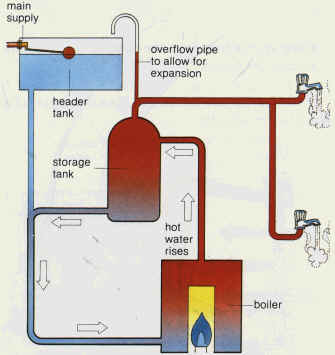 |
Explain why the freezer compartment in a refrigerator is placed at the top.
Because warm always rises and cooler air sinks. When warm air rises, it enters the freezer compartment and gets cooler and as a result it sinks and a new hot air rises. In time, all the air will be cooled.
Explain why a refrigerator does not work properly if the food is too tightly packed inside.
Because a tightly packed food will prevent the circulation of warm and cool air.
Explain why a radiator quickly warms all the air in a room, even though air is a very poor conductor of heat.
Because heat is carried due to the air circulations by convection rather than by conduction.
Explain why warm water rises when surrounded by cooler water.
Because it density is less than density of the cooler water surrounding it.
Explain how can we reduce heat lost due to convection?
This can be done by preventing air circulations. For example, when we cover hot tea we prevent air circulations and thus prevent convection to take place.
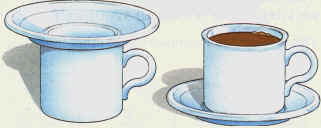
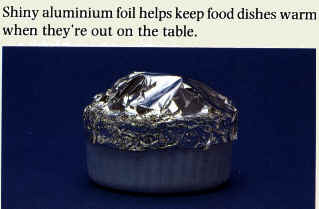
|

